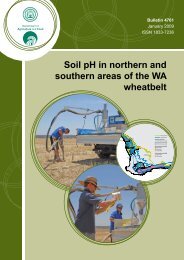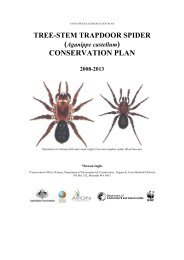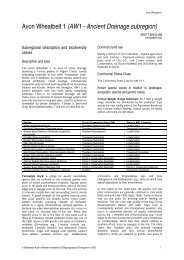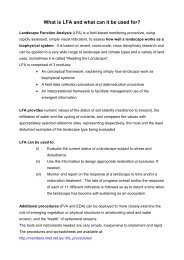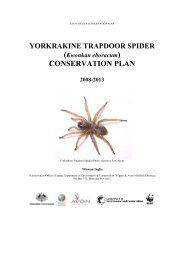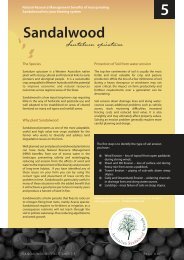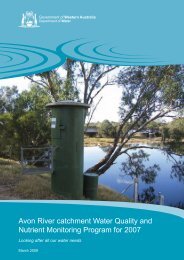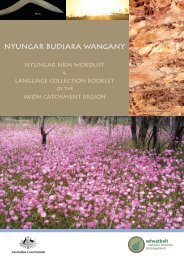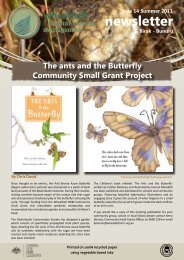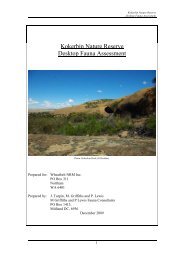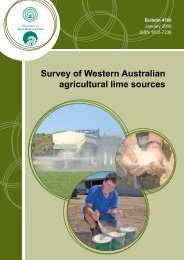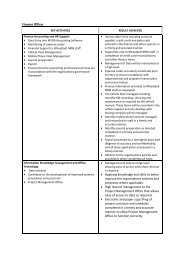RECORDING TRADITIONAL KNOWLEDGE O r ... - Wheatbelt NRM
RECORDING TRADITIONAL KNOWLEDGE O r ... - Wheatbelt NRM
RECORDING TRADITIONAL KNOWLEDGE O r ... - Wheatbelt NRM
Create successful ePaper yourself
Turn your PDF publications into a flip-book with our unique Google optimized e-Paper software.
PRE-EUROPEAN SETTLEMENT<br />
Moort, Dartj and Merenj in our Budjar (Family and food)<br />
B<br />
efore pre-European settlement Noongar lived in harmony with the land. They<br />
recognised six seasons in their year, Bunuru, Djeran, Makuru, Djilba,<br />
Kambarang and Birak, and managed the budjar accordingly. Each Noongar<br />
moort or family had their own land for hunting and gathering purposes and regarded the<br />
incursion of others onto it as trespass, although resources were shared freely with<br />
neighbours (Tilbrook 1983, pp.105, 556).<br />
There were between thirty and forty distinct roots, nuts and vegetables eaten by Noongar<br />
and which were gathered nearly all year round. The flowers of three or four trees and<br />
shrubs afforded them honey, either by suction or steeping in water. There was hardly any<br />
shortage of food throughout the six-season cycle, katitjin or knowledge was given to the<br />
Noongar by the Waakal to manage our land according to the seasons and Noongar<br />
harvested only the food for their immediate use (Swan River Trust 1998). The Noongar or<br />
people of the south west of Western Australia had a veritable supermarket of food from<br />
which to choose, depending on the food chain. As Whadjuck/Ballardong Fred Collard<br />
(2002) states, “They used to. . . move around with the seasons in the early days [and] the<br />
season was all about where the food line was”. And according to Noongar historian, Dr<br />
Rosemary van den Berg:<br />
… they hunted kangaroo (yongka), emu, (waitj), possums (coomarl), snakes,<br />
(land snakes, not water snakes), lizards (caarda, and yoorna), turtles and their<br />
eggs, honey, birds like rosellas, bronze-wing pigeons and ducks and their eggs<br />
and the bardi grubs, which could be eaten raw or cooked in the coals. Their<br />
vegetable and fruit intake included edible tubers, quandong, berries and nuts<br />
and a type of grain which could be crushed and made into a damper. The<br />
boyoo or toxic zamia palm had special treatment before it could be eaten (van<br />
den Berg 2001, p.96).<br />
The late Ballardong Noongar Tom Bennell (1978b) says “one Noongar would have said to<br />
his moort when they were around their karla, do you want to dartcha koorliny? That means<br />
do you want to go hunting for meat or merinj koorl buranginy – go looking for vegetables.”<br />
Page 21



